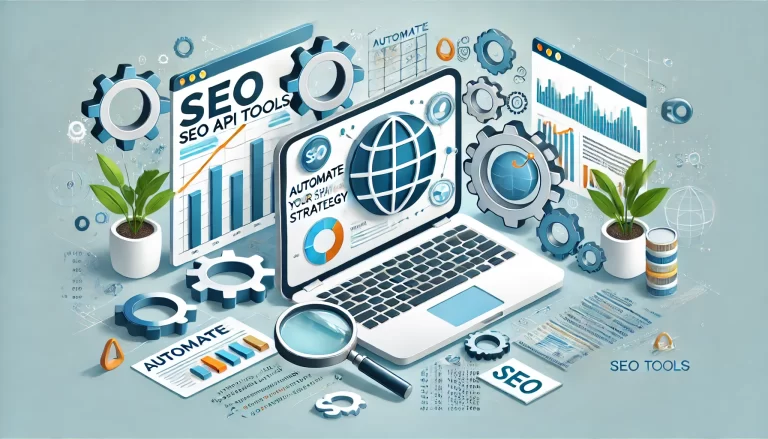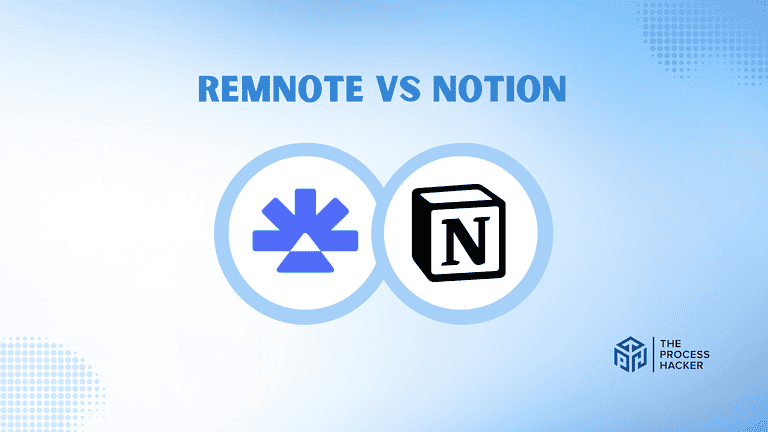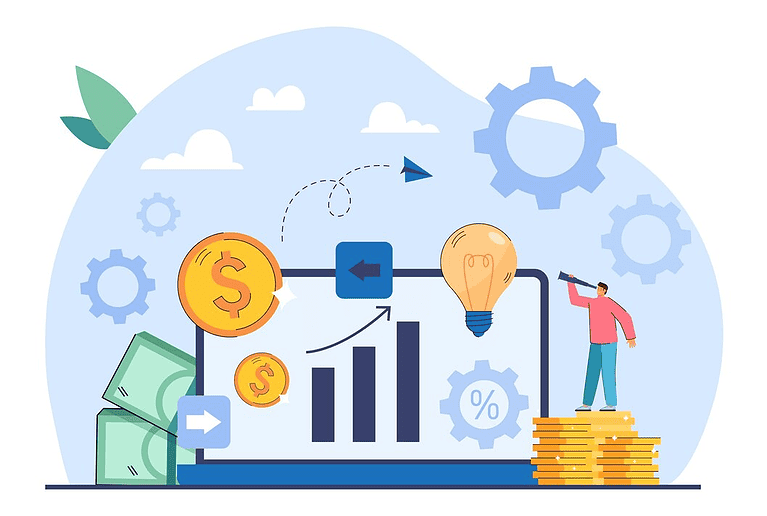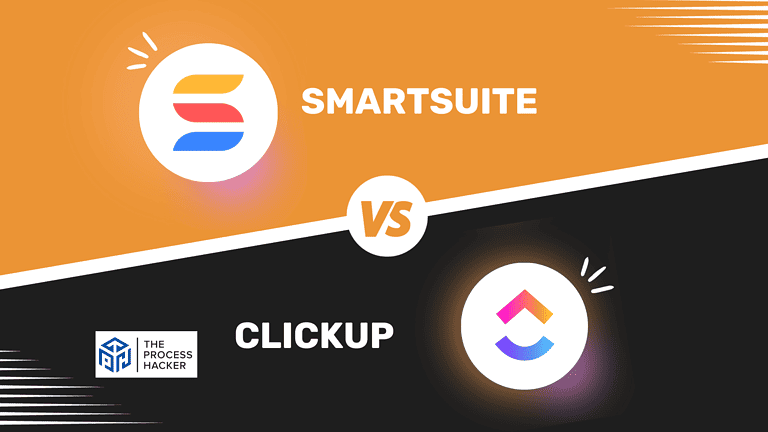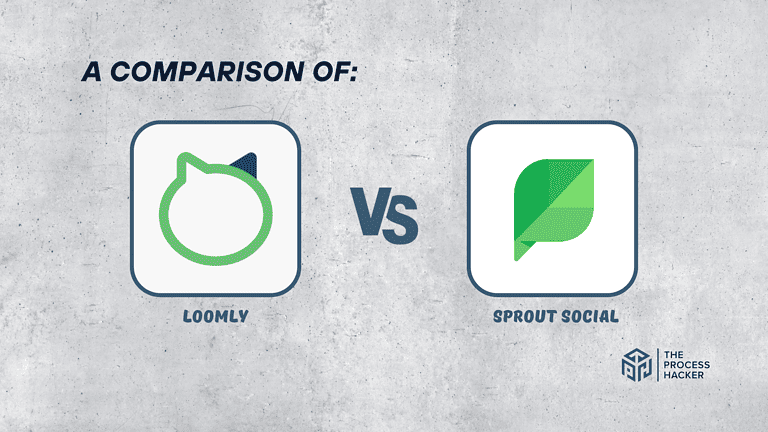Sales Automation: A Comprehensive Guide for 2024
Hey sales rockstar! Ready to level up your sales game?
Then, get ready for the ultimate sales automation guide. Automation has changed how businesses operate and opened up massive growth and more deals!
But let’s be real, you don’t want to lose that human touch that sets you apart from the competition, right? Well, don’t worry, friend!
In this guide, we’ll show you how to automate business and recommend the best sales automation tools for 2024! Plus, we’ll get into the AI factor and master the balance of automation and personalization.
We’ll give you all the tools to keep your sales sharp while still being personal.
Ready to level up?
Bottom Line Up Front (BLUF) Summary
- Sales automation software will streamline, automate manual tasks, and measure sales tasks and workflows to close more customers and strengthen customer relationships.
- Relies heavily on customer relationship management (CRM), lead scoring, project management, & AI to optimize processes.
- Requires you to assess your current sales process, set sales goals and provide training to your salespeople.
What is Sales Automation?
Sales automation software helps increase productivity and streamline sales tasks and business processes. Imagine being able to send follow-up emails, create drip marketing campaigns, and assign sales tasks with just a few clicks.
Plus, you can track your emails, phone calls, and in-person visits in real time to better communicate with your customers. But wait, there’s more!
Sales automation takes it to the next level by automating sales processes to streamline your workflow. With a platform that triggers actions when certain business events happen, you can reduce the time and effort required to complete sales tasks and,, ultimately, close more deals!
Why Should You Implement Sales Automation?
Sales automation streamlines sales processes, helps you complete more transactions, and increases income by automating sales duties and client interaction. Your sales representatives may concentrate on developing connections and completing transactions.
Meanwhile, your sales automation software does email marketing, lead prioritization, lead distribution, and reporting. So, sales process automation increases sales productivity, and you and your sales team get ahead of the competition.
Streamline Repetitive Tasks
Sales automation tools simplify tedious sales tasks, such as email follow-ups and meeting scheduling, allowing smart teams to focus on building lead and customer relationships and closing deals. These lead enrichment tools can scrape the web for new prospects, provide lead lists with no duplicates, score leads to determine priority, and automates following up and scheduling meetings.
As a result, your sales reps can focus on more strategic sales activities, which boosts their productivity. By automating tasks like sending follow-up emails, manual prospect data entry, and creating new profiles for leads engaging with sales data and marketing materials, sales teams save valuable time and resources.
Streamlining repetitive tasks like email follow-up or meeting scheduling also increases accuracy and reduces human error, ensuring that your people deliver high-quality service.
Enhance Customer Service and Engagement
Sales automation not only streamlines tasks but also enhances customer engagement by providing personalized and timely communication. This improved engagement leads to better customer satisfaction and loyalty, ultimately driving revenue growth.
These digital tools enable businesses to create more targeted and relevant interactions with potential customers. These tools have amazing features, including segmentation, lead enrichment, chatbots, site tracking, meeting scheduling tools, and email management automation tools.
By doing so, businesses can effectively leverage the benefits of sales automation to ensure that there are no more customer service issues. Simultaneously, each sales rep in your sales organization will maintain a solid connection with their customers.
What are the Key Components of Sales Automation?
To create a seamless and efficient business system and sales automation relies on three key components: CRM integration, lead scoring and prioritization, and task automation. By integrating these components into their sales process, businesses can optimize their sales pipeline and boost revenue.
Customer Relationship Management (CRM)
Having a Sales CRM is key to sales automation as it centralises your data and automates many sales tasks. CRM’s help you keep a record of your conversation history so you can track progress and maintain customer relationships. Integrating your CRM with automation solutions enables you to optimize your sales operations, increase efficiency, and boost customer happiness.
Plus, your CRM enables you and your sales staff to automate administrative chores such as scheduling sales appointments, sending follow-up emails, and updating their sales funnel. This saves time and effort for your sales teams and ensures consistency in the sales process.
Lead Scoring and Prioritization
Lead scoring and prioritization is another crucial component of sales automation. It enables you to identify and prioritize leads based on their level of interest and engagement. By grading prospects based on their behavior, your sales teams may focus on high-value leads and close deals faster.
Lead scoring and prioritization may also help you identify the most effective marketing campaigns and channels, enabling you to better your marketing data and generate more leads. Sales automation software may automatically evaluate and rank prospects based on predefined criteria such as lead source, demographics, behavior, and engagement level.
Sales Process Automation
Automating your sales process eliminates repetitive, time-consuming chores off your plate. Lead nurturing, prospect follow-up, and meeting scheduling are all tasks that may be automated. This allows your sales force to concentrate on what is most important: establishing connections and completing transactions.
When you automate these tedious procedures, you save more than simply time. You are also ensuring that your sales procedures are consistent and accurate, lowering the likelihood of mistakes and delays. Automation software may handle tasks like sending follow-up emails, gathering contact information, and scheduling appointments. This way, your sales staff may focus on more strategic tasks promoting development.
How to Choose the Right Sales Automation Tool?
The sales automation technology is vast and diversified, with several platforms providing distinct features and capabilities. As a result, you must choose the appropriate tools to meet your company’s and sales objectives.
Here are the main factors to consider while selecting these tools:
- Integration: To maximum productivity, ensure that the business automation solutions you pick can interface with your current CRM and other sales tools.
- Customization: Look for automation technologies that can be customized to meet your sales procedures and workflow.
- Ease of Use: Choose automation solutions that are simple to use and need little training so you can get started fast and optimize productivity.
- Analytics: Look for a reporting automation platform that provides detailed analytics and reporting.
What Are the Best Sales Automation Software Tools?
As the demand for automation grows, there are many tools available to help you achieve your business goals. Here is a list of some of my favorite sales automation platforms:
Pipedrive
Pipedrive is a CRM and funnel management software that can help you better manage your sales activities, such as lead grading, task automation, and personalized pipelines.
HubSpot Sales
HubSpot is an enterprise-level business sales and marketing automation CRM that automates meeting scheduling, email follow-up, customer contact management, lead grading, task automation, and customized outreach.
ActiveCampaign
ActiveCampaign is a complete marketing and sales automation platform offering features like lead scoring, task automation, and customized email campaigns. It is compatible with most CRMs and other sales tools.
HoneyBook
HoneyBook is a customer relationship management platform that offers sales automation features such as task automation, lead tracking, and customizable forms for capturing leads. It also provides analytics and reporting to track your sales performance.
The Role of AI in Sales Automation
AI is a sales automation game changer, with advanced lead scoring, predictive analytics, and intelligent recommendations to drive revenue growth. By using AI, you and your sales teams can focus on qualified leads, make data-driven decisions, and engage with customers.
Sales AI can also automate repetitive tasks like data entry, customer segmentation, lead generation and qualification. Plus, AI tools can analyze your customer data to find patterns and trends and give your sales team recommendations to make better decisions.
Apollo
Apollo is an artificial intelligence platform that automates lead qualifying, data enrichment, and tailored outreach. It also includes comprehensive analytics and reporting tools to help you monitor your sales success.
Gong
Gong is a sales intelligence platform that utilizes AI to monitor sales interactions and deliver insights into client purchasing behavior, empowering your team to make smart choices. It also provides work automation and coaching options to help your sales representatives perform better.
Jasper AI
Jasper AI is a sales content creation app that utilizes artificial intelligence to create bespoke email and phone scripts, saving time for your sales staff. Create sales and landing pages to increase leads and conversions.
How to Effectively Implement Sales Automation
Implementing sales automation effectively requires assessing current sales processes, including the sales funnel, setting clear goals and objectives, and providing training and support for your sales teams. These strategies ensure the chosen tools align with business needs, deliver the desired results, and help sales teams adapt to new sales workflows.
Evaluate Your Sales Processes
Before implementing sales automation, evaluating your current sales processes is crucial. This step helps identify areas where automation can be most beneficial. It ensures a smooth transition to new tools and business workflows. By analyzing your sales processes and identifying areas for improvement, you can create a plan for sales process automation implementation that optimizes your sales efforts.
In addition, evaluating your sales processes helps you understand your strengths and weaknesses. This understanding enables you to decide which automation tools to adopt. By laying the foundation for a successful strategy, you can ensure that the chosen tools deliver maximum value and impact.
Set Clear Goals and Objectives
Having clear goals is key to sales automation success. Clear goals give direction and focus to sales teams, allowing them to work towards a common goal. Examples of clear goals are increasing sales revenue, improving customer satisfaction, reducing customer churn,, and increasing market share.
To set goals follow the SMART criteria (Specific, Measurable, Achievable, Relevant and Time-bound). Then, break down bigger goals into smaller tasks.
Also, involve your leadership and sales in the goal-setting process. This will get buy-in and commitment from the entire sales team and increase the chances of successful sales automation implementation.
Train and Support Your Sales Reps
Training and support for your sales teams are key to successful sales automation. Training sessions will help your sales reps understand the features and processes of the sales tools.
By adding sales automation to their daily work, each sales rep will work less on sales tasks. So the time sales reps spend with customers should increase.
And ongoing support means sales teams can troubleshoot any issues that arise and get guidance on best practices. By investing in training and support, you’ll get the most out of automation and have your sales teams ready for the competitive market.
Things to Keep in Mind

While automation can be good for business, here’s what you need to remember to get the best results.
How to Balance Automation and Personalization
A human touch is key in sales interactions to build strong and real relationships with customers. Automation tools can save time and effort, but shouldn’t replace the personal connection your sales reps make with prospects. Sales reps should use automation to augment, not replace, human interaction.
Balancing automation and personalization will result in efficient sales processes and strong customer relationships, which will improve customer satisfaction, loyalty,, and revenue.
How to Measure the Success of Sales Automation
Sales automation success is measured by measuring key performance indicators (KPIs) like as conversion rates, sales cycle time, and customer happiness to understand how automation affects sales performance. Tracking these KPIs will allow you and your team to see how your automation tools are doing and change appropriately.
Automated sales reporting and analytics may also assist your team monitor its sales success and identify areas for improvement. By periodically assessing sales automation, you can optimize your sales processes and ensure your sales teams are prepared to meet objectives and generate revenue growth.
How to Overcome Common Challenges in Sales Automation
To overcome the common sales automation challenges of resistance to change and loss of personal touch you need a strategy, ongoing training and balance between automation and human interaction. By tackling these head on you’ll have a smooth and successful roll out in your team.
One of the key ways to do this is to involve your sales teams, including sales managers, in the implementation and provide ongoing training and support. This will help your sales reps adapt to new tools and workflows and be able to use the sales automation tools while still having a solid connection with their customers.
So by overcoming the common sales automation challenges, you’ll have more efficient sales processes and stronger customer relationships. You and your team will grow and be more efficient while still being human.
The Future of Sales Automation
The future is bright for sales automation. AI and machine learning will play a bigger and bigger part in the sales process. In the future, AI-powered tools will grow and grow, helping you and your business automate more complex tasks like lead scoring and forecasting and deliver more personalized and targeted customer experiences.
And chatbots and virtual assistants are becoming more and more popular in sales automation, a new way for businesses to talk to customers and handle customer queries.
Final Thoughts on Sales Automation
Sales automation is a game changer for firms trying to improve their sales process, boost productivity, and maximize revenue. You may use automation technologies and tactics to automate tedious sales processes, communicate with clients, and concentrate on relationship development and deal closing.
To do this, you must evaluate your present sales process, establish specific goals and targets, and educate and support your salespeople. By doing so, your company may use the potential of sales automation while remaining connected to its leads and customers.
Frequently Asked Questions
How can sales automation benefit you?
Sales automation benefits you significantly as it makes it easier for you to engage customers and focus on building better relationships.
It can help you streamline processes, reduce manual labor, and free up resources to focus on more critical tasks. It also allows you to track customer interactions and gain valuable insights into customer behavior.
How do I choose the right sales automation tools for my business?
Evaluate your current sales process, identify where automation can help, and pick tools that meet your business needs and objectives. This is the best way to choose the right sales automation tools for your business.
What role does AI play in sales automation?
AI helps sales teams increase efficiency and revenue through lead scoring, predictive analytics, and intelligent recommendations.
These tools can help sales teams identify the best leads, prioritize tasks, and make more informed decisions. They can also provide insights into customer behavior and preferences, allowing sales teams to tailor their approach.


